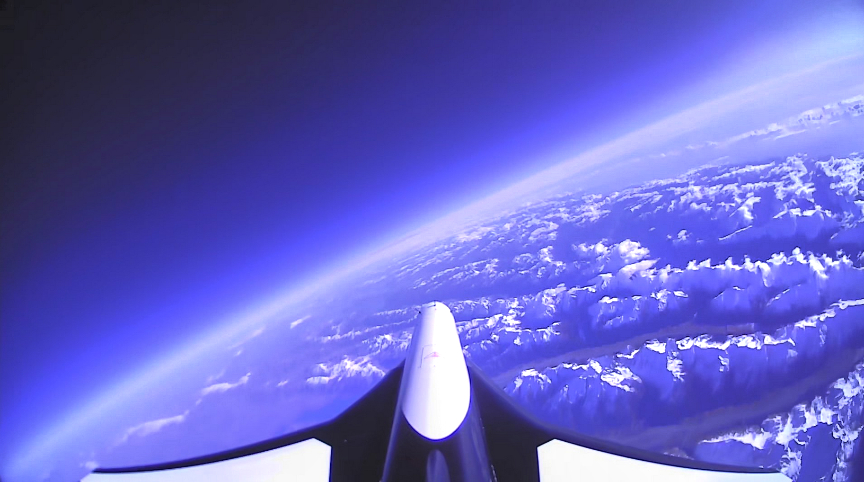
Dawn Aerospace has made history with the successful supersonic flight of the company’s Mk-II Aurora rocket-powered aircraft, making it one of the fastest ,privately-developed aircraft on the planet.

photo courtesy of the company.
The company, operating as Dawn Hypersonics, achieved the milestone on November 12, 2024, with the Aurora surpassing the speed of sound for the first time, reaching Mach 1.1 and climbing to an altitude of 82,500 feet. This is more than twice as high as commercial aircraft and marks the first time a civil aircraft has flown supersonic since Concorde. This achievement signifies a major step toward operational hypersonic travel and daily space access, establishing rocket-powered aircraft as a new class of ultra-high-performance vehicles.
The flight, conducted from New Zealand’s Glentanner Aerodrome near the base of Aoraki Mt Cook, exceeded its test target speeds and altitude of Mach 1.05 and 75,000 feet. The Aurora also set a global record, becoming the fastest aircraft to climb from ground level to 20 km (66,000 feet), completing the ascent in just 118.6 seconds. This beats the previous record, held by a highly modified F-15 ‘Streak Eagle’ in the 1970s, by 4.2 seconds.
The Aurora is designed to fly to the edge of space—100 km altitude—twice in a single day, reaching speeds of Mach 3.5 during ascent and re-entry. The Mk-II Aurora is powered by pure rocket propulsion, which features thrust-to-weight ratios 20 times higher than conventional jet engines, and is not limited to operation within the atmosphere. These capabilities make it ideal for applications such as microgravity research, atmospheric science, EO, and testing high speed flight.
“This achievement highlights the immense potential of rocket-powered aircraft to achieve performance never seen before,” said Stefan Powell, CEO of Dawn Aerospace. “With flight test 57, we retired the final major technical risk in the Aurora program: vehicle dynamics through the transonic regime. We have now confirmed the Aurora as the highest climb rate vehicle ever built. This milestone sets the stage for Aurora to become the world’s highest and fastest-flying aircraft and paves the way for the first operational hypersonic aircraft, redefining what’s possible in aviation. As a company, we have been working for more than seven years to design, develop, test, and deliver supersonic flight. We are now achieving this and will start commercial payload operations in the coming months under the Dawn Hypersonics brand.“
